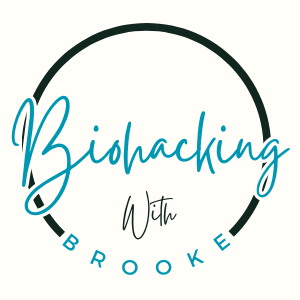Are you ready to boost your performance in a fun way? Brain-body training might just be what you need. This method links your mind and body, helping you perform better in any activity you love.
Tired of hitting a wall in your training? You’re not alone. Many people struggle to find the right balance between mental focus and physical ability. That’s where brain-body training comes in. It’s all about sharpening your mental game while tuning your physical skills.
In this post, you’ll discover practical tips to enhance coordination, focus, and strength through simple exercises. Get ready to unlock your potential and elevate your game!
What is Brain-Body Training?
Brain-body training is a fascinating method that merges our mental and physical capabilities. This approach emphasizes the connection between our brain and body, illustrating how mental focus can enhance physical performance. By understanding this connection, you can unlock new levels of coordination, strength, and agility.
Understanding Brain-Body Connection
The brain communicates with the body using a complex network of nerves. It sends signals that control our movements and reactions. Think of your brain as the command center, issuing instructions based on the information it receives from the environment. When you practice brain-body training, you’re essentially tuning this connection.
For example, when you throw a ball, your brain processes visual and spatial information to guide your hand. The more you engage in activities that challenge this connection, the better your brain gets at controlling your body’s movements. Whether it’s balance, coordination, or reaction time, you’ll notice improvements as you fine-tune this relationship. Techniques such as mindfulness and targeted exercises can enhance your focus and mental clarity, directly improving your physical capabilities. For deeper insights on the subject, check out this resource on brain-body workouts.
Benefits of Brain-Body Training
Engaging in brain-body training comes with a plethora of benefits. Let’s dig into some of them:
- Enhanced Performance: Athletes and fitness enthusiasts find that improving mental acuity translates into better physical performance. Coordinated movements become second nature.
- Increased Focus: Regularly practicing these techniques sharpens your attention, helping you stay present in any activity. This heightened focus can reduce errors during performance.
- Stress Relief: Exercise combined with mental training has been shown to alleviate stress and anxiety. When you’re relaxed, your body can perform better.
- Improved Coordination: As you strengthen the brain-body connection, your coordination improves, leading to smoother and more efficient movements in any sport or activity.
- Boosted Memory and Learning: Brain-body training enhances cognitive function, which can aid in memory retention and learning new skills. Research indicates that regular physical activity promotes brain health, enhancing memory and thinking skills (learn more here).
- Better Mood: The endorphins released during physical activity contribute to a more positive mood, making it easier to tackle challenges in training and daily life (source).
By incorporating these practices into your routine, you will not only elevate your physical capabilities but also nourish your mind. Embracing brain-body training is a step towards discovering your full potential!
Techniques for Brain-Body Training
Harnessing your mind to power up your body can transform your performance. This section highlights techniques that effectively bridge the mental and physical aspects of training. Get ready to explore mindfulness practices, visualization strategies, and physical movement exercises.
Mindfulness Practices
Mindfulness is about being present. It helps you enhance your focus and concentration. Try these exercises to sharpen your mental game:
- Breathing Exercises: Pause and take deep breaths. Inhale slowly through your nose and exhale through your mouth, concentrating on the rhythm. This calms your mind and boosts focus.
- Body Scanning: Close your eyes and mentally scan your body from head to toe. Notice any tension and consciously relax those areas. This technique connects you with your body and heightens awareness.
- Mindful Observation: Take a few minutes to observe your surroundings. Focus on each detail, from sounds to colors. This practice sharpens observation skills and increases mental clarity.
For a deeper dive into mindfulness exercises, check out 21 Simple Mindfulness Exercises to Improve Your Focus.
Visualization Techniques
Visualization can be a powerful tool for athletes and performers. Imagine yourself succeeding, and you’ll likely perform better. Here’s how to utilize this method effectively:
- Mental Rehearsal: Picture yourself going through your motions flawlessly. Envision every detail, from your movements to your emotions. This prepares your brain and body for actual performance.
- Positive Imagery: Create a mental image of your goals. This can be winning a game or mastering a skill. This technique builds confidence and motivation.
- Guided Visualization: Follow along with audio or video guides. These can help you strengthen your mental imagery and deepen the focus on success.
For more insights, read about how visualization can enhance performance in The Power of Visualization: Enhancing Performance in Sports.
Physical Movement Exercises
Connecting your mind and body through physical movement creates a synergy that boosts overall performance. Here are some exercises you can try:
- Yoga: This practice links breathing with movement, enhancing flexibility and focus. Each posture requires concentration, fostering a strong mind-body connection.
- Tai Chi: This gentle martial art emphasizes slow, performed movements. It helps improve balance and focus, making it great for mental clarity.
- Qigong: This traditional Chinese practice integrates movement, breathing, and meditation. It promotes relaxation and body awareness, supporting your overall performance.
To explore more exercises, visit Exercises to Engage Mind and Body.
By actively engaging in these techniques, you can enhance both your mental and physical abilities. It’s all about integrating your mind and body for a powerful performance boost!
Incorporating Brain-Body Training into Daily Life
Integrating brain-body training into your daily routine can enhance your performance significantly. Here are practical ways to set achievable goals, create a schedule, and track your progress effectively.
Setting Goals
Setting clear and achievable goals is essential for successful training. Goals give you direction and motivation. Use the SMART criteria to define your objectives:
- Specific: Clearly define what you want to achieve. For example, aim to practice mindfulness techniques three times a week.
- Measurable: Track your progress. Instead of saying “get better,” specify “improve my balance by 15% in two months.”
- Achievable: Set realistic goals. Start with small milestones, such as completing a 10-minute session each day.
- Relevant: Ensure your goals align with your overall performance aims. If you’re training for a marathon, focus on endurance and mental resilience.
- Time-bound: Set deadlines. For instance, aim to master a new visualization technique by the end of the month.
For more tips on goal-setting, check out How To Set Training Goals: Steps, Tips and Examples.
Creating a Schedule
A routine helps integrate brain-body practices seamlessly into your life. Here are tips for crafting an effective training schedule:
- Daily Integration: Pair brain-body exercises with existing activities. For example, practice mindfulness during your morning coffee or visualize your goals while commuting.
- Set Time Blocks: Dedicate specific times in your day for training. Consider early mornings or evenings when you’re less distracted.
- Use Reminders: Set alarms on your phone or calendar to prompt you for practice sessions. Consistency is key.
- Stay Flexible: Life can be unpredictable. Adapt your schedule as needed but aim for at least three sessions per week.
For helpful routines, take a look at Daily Routines for Brain Health.
Tracking Progress
Monitoring your improvements encourages growth and keeps you motivated. Here are effective ways to track your performance:
- Journaling: Keep a daily log of your training sessions, noting what works and what doesn’t. This personal reflection promotes awareness.
- Set Benchmarks: Use key performance indicators (KPIs) to assess your progress. For example, if balance is your goal, measure how long you can stand on one leg.
- Regular Reviews: Check your goals monthly to see how far you’ve come. Modify them if necessary to stay challenging yet achievable.
- Accountability Partners: Work with a friend or coach. Having someone to discuss challenges and victories with adds encouragement.
To learn more about performance tracking, visit How to Maintain and Monitor Performance.
Real-Life Success Stories
Understanding how brain-body training transforms lives can be truly inspiring. Both athletes and everyday achievers share compelling stories that showcase the effectiveness of these techniques. These accounts not only highlight accomplishments but also motivate others to explore the potential within themselves.
Athletes’ Experiences
Athletes often face immense pressure to perform at their peak, both physically and mentally. Many have turned to brain-body training techniques to gain that extra edge. Here are some standout stories:
- Venus Williams: This four-time Olympic gold medalist emphasizes the importance of mental training. She believes that focusing on mental skills is as crucial as physical preparation. By integrating visualization and mindfulness, she has maintained her competitive edge throughout her career. You can read more about her journey here.
- Restoic Athletes: These athletes are at the forefront of a movement to train their mental health just as hard as their bodies. From overcoming anxiety to honing focus, their experiences show the profound impact mental training can have on performance. Discover more inspiring stories from these athletes here.
- Neuro-Athletic Training: Athletes are increasingly utilizing neuro-athletic training to boost their mental capabilities. This approach has helped athletes improve their cognitive functions, leading to better game performance. Learn how neuro-athletic training shapes success stories here.
These examples demonstrate that athletes are not just physically trained. They also engage their minds actively to amplify their performance.
Everyday Achievers
Brain-body training isn’t reserved for elite athletes. Many non-athletes have embraced these techniques to enhance their lives. Let’s explore some of their stories:
- Fitness Enthusiasts: Everyday individuals practicing brain-body exercises report significant improvement in their physical fitness and mental well-being. Many have shared how simple mindfulness techniques have reduced stress and improved their focus and productivity in daily tasks. For further insights into how fitness impacts mental health, check out this article here.
- Office Workers: Individuals in high-pressure work environments use brain-body training to enhance their performance. Simple techniques like breathing exercises and visualization have helped them manage stress effectively and boost workplace productivity. Discover how mental skills training can benefit professionals here.
- Health-Conscious Individuals: Studies indicate that regular physical activity and mental training combined improve overall cognitive function and body awareness. Those who engage in these activities often find themselves feeling more balanced and fulfilled. Explore this connection further in this detailed study here.
These stories illustrate that brain-body training techniques can forge success, whether on the field, in the office, or in everyday pursuits. Everyone can unlock their potential and enhance their performance through these powerful connections.
Conclusion
Brain-body training is more than just a trend; it’s a powerful approach to enhancing your performance. By connecting your mind with your body, you can improve coordination, focus, and even alleviate stress.
Start incorporating these techniques into your routine today. Whether you choose mindfulness exercises, visualization, or physical movement, each step counts.
What will you tackle first on your brain-body training journey? The possibilities are endless, and your potential is just waiting to be unlocked.
Brooke is a rock-climbing 🧗♀️, tennis-playing 🎾, biohacking 🧬 bookworm 📚 on a mission to unlock the secrets of health, longevity, and living life to the fullest 🌟. When she’s not scaling cliffs, hitting the courts, or testing out the latest hacks, you’ll find her nose in a book or adventuring with her four-legged best friend 🐕 by her side. With a knack for turning science into simple, actionable tips, Brooke’s writing is your guide to hacking your biology and living your best, most vibrant life!

![Boost Your Performance with Brain-Body Training [Tips Included]](https://biohackingwithbrooke.com/wp-content/uploads/2024/11/brain-body-training.jpeg)
